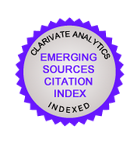Invasive potential of alien and native plant species from the genus Impatiens L.
https://doi.org/10.29235/1561-8323-2025-69-5-392-398
Abstract
An analysis of the biological characteristics and invasive potential of alien species of Impatiens, which have been widely distributed throughout the Republic of Belarus and neighboring countries, was conducted. A comprehensive assessment has demonstrated that the invasive potential of the alien species of I. parviflora DC. and I. glandulifera Royle exceeds that of the native species of I. noli-tangere L. by more than 1.6 times. A study of the allelopathic properties of these plants revealed that 10 % extracts obtained from the above-ground biomass of I. parviflora exhibited the most significant inhibitory effect on the linear dimensions of both the roots and shoots of the test cultures. In contrast, extracts from I. noli-tangere and I. glandulifera exhibited a comparatively diminished effect. In experimental conditions, extracts demonstrated a greater inhibitory effect on test culture root growth compared to shoot growth.
About the Author
V. N. ProkhorovBelarus
Prokhorov Valery N. – Corresponding Member, D. Sc. (Biology), Professor, Chief Researcher.
27, Akademicheskaya Str., 220072, Minsk
References
1. Chen Y. L. Notulae de genere Impatiens L. florae Sinicae. Acta Phytotaxonomica Sinica, 1978, vol. 16, no. 2, pp. 36–55. Available at: https://archive.org/details/acta-phytotaxonomica-sinica-16-2-036-055/mode/2up (accessed 21 January 2025).
2. Gaggini L., Rusterholz H. P., Baur B. The annual invasive plant Impatiens glandulifera reduces hyphal biomass of soil fungi in deciduous forests. Fungal Ecology, 2019, vol. 39, pp. 242–249. https://doi.org/10.1016/j.funeco.2018.12.004
3. Coombe D. E. Impatiens parviflora DC. Journal of Ecology, 1956, vol. 44, no. 2, pp. 701–713. https://doi.org/10.2307/2256857
4. Skalova H., Moravcova L., Pysek P. Germination dynamics and seedling frost resistance of invasive and native Impatiens species reflect local climatic conditions. Perspectives in Plant Ecology, Evolution and Systematic, 2011, vol. 13, no. 3, pp. 173–180. https://doi.org/10.1016/j.ppees.2011.03.005
5. Dubovik D. V., Lebedko V. N., Parfenov V. I., Savchuk S. S., Skuratovich A. N., Orsich O. I., Orlov A. A. Plantsaggressors: Invasive Species on the Territory of Belarus. Minsk, 2017. 192 p. (in Russian).
6. Kowarik I. Biologische invasionen in Deutschland: zur Rolle nichteinheimischer Pflanzen. Kowarik I., Starfinger U., eds. Biologische Invasionen. Berlin, 2002, vol. 1, pp. 5–24 (in German).
7. Kupcinskiene E., Zybartaite L., Janulioniene R., Zukauskiene J., Paulauskas A. Molecular diversity of small balsam populations in relation to site characteristics. Central European Journal of Biology, 2013, vol. 8, no. 10, pp. 1048–1061. https:// doi.org/10.2478/s11535-013-0228-3
8. Chmura D., Sierka E., Orczewska A. Autecology of Impatiens parviflora DC. in natural forest communities. Botanika – Steciana, 2007, no. 11, pp. 17–21.
9. Elemans M. Light, nutrients and the growth of herbaceous forest species. Acta Oecologica, 2004, vol. 26, no. 3, pp. 197–202. https://doi.org/10.1016/j.actao.2004.05.003
10. Čuda J., Skalova H., Pyšek P. Spread of Impatiens glandulifera from riparian habitats to forests and its associated impacts: insights from a new invasion. Weed Research, 2020, vol. 60, no. 1, pp. 8–15. https://doi.org/10.1111/wre.12400
11. Prokhorov V. N. Invasive potential of little-flowered (Impatiens parviflora DC.). Botanika (issledovaniya) [Botany (research)], 2020, no. 49, pp. 323–333 (in Russian).
12. Ruckli R., Hesse K., Glauser G., Rusterholz H.-P., Baur B. Inhibitory potential of naphthoquinones leached from leaves and exuded from roots of the invasive plant Impatiens glandulifera. Journal of Chemical Ecology, 2014, vol. 40, pp. 371–378. https://doi.org/10.1007/s10886-014-0421-5
13. Markov M. V., Ulanova N. G., Chubatova N. V. Genus Touchy. Biologicheskaya flora Moskovskoi oblasti [Biological flora of the Moscow region]. Moscow, 1997, no. 13, pp. 128–168 (in Russian).
14. Hatcher P. E. Impatiens noli-tangere L. Journal of Ecology, 2003, vol. 91, no. 1, pp. 147–167. https://doi.org/10.1046/j.1365-2745.2003.00741.x
15. Eliáš P. Size inequality in coenopopulations of a woodland annual Impatiens noli-tangere L. Biolôgia (Bratislava), 1987, vol. 42, pp. 881–891.













































